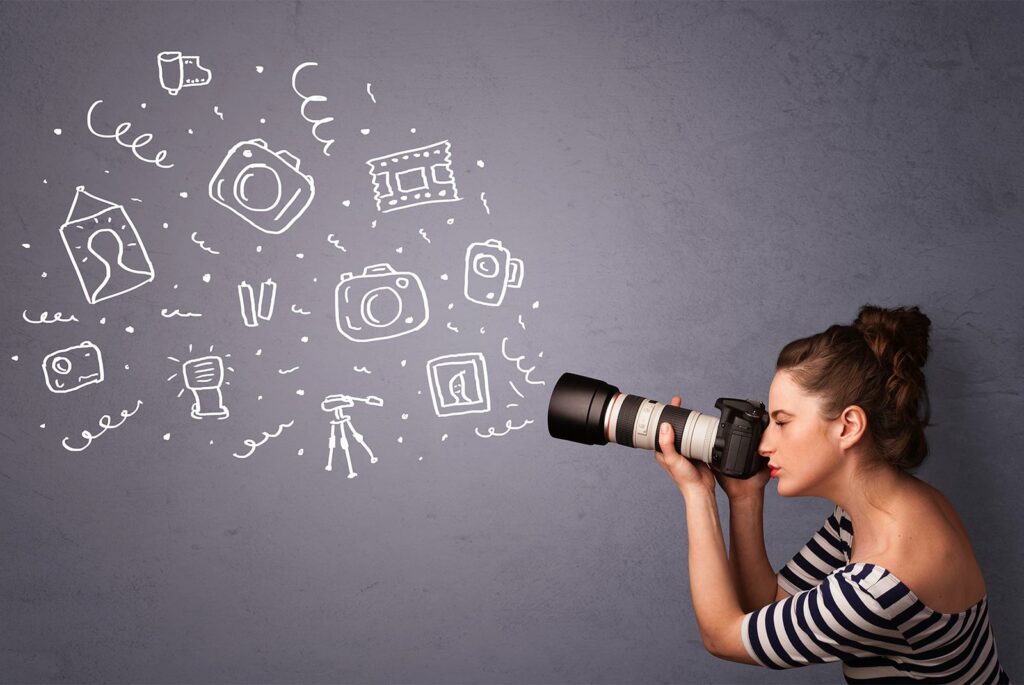
Let’s talk about images
Agnes Nielsen
The saying ‘A picture says more than a thousand words’ is very true. You can say so much with a well-chosen image. Good image selection can really lift your therapy tool by giving it the extra direction your user might need; it can make it more impactful.
Let me walk you through some good image selection practices.
Original content is king
So, if you’ve created your own images, illustrations, and words they are not only favoured by social media algorithms, they are also automatically yours and protected by copyright laws. It’s your intellectual property (IP).
There is much to love about original content and the use of it. You can really say exactly what you want to say. For example, let’s say you are an occupational therapist and you have a physical activity you want to illustrate. The best way to do that is take a photo (or a sequence) or record a video of someone demonstrating it.
It doesn’t have to be fancy, it just has to clearly demonstrate what the activity is about. And you can definitely do that on your phone.
Another example is prep station/flat lay photos. Let’s say your activity may require a few items or tools. You can lay them out on a table and take a photo from above; that’s called a ‘flat lay’. The visual addition to, let’s say a written list and/or instruction, really helps people square off how to prepare.
The help of stock images, footage, sound, and illustrations
There are many stock libraries available for every budget and they cover almost every topic you can think of. Please read the copyright notices carefully. In general, they are available for purchase and come in different categories. Royalty-free is the best option – as you can use them for most things (sales, blogs etc) after purchase.
Editorial images: As the word suggests they are meant for editorial only. So, they would have to be used in an editorial context such as blogs, news or publishing. They are more expensive and come with particular rules of application.
Google images: Using images from Google is an unsavoury practice, so please don’t do it. When you use a Google image search, it brings up images tagged under your search line. They have been published on a website by someone else: a company or a person that relates to a topic on that website. It belongs to the original publisher or creator and is generally in breach of their copyright to just take the photo and use it. Copyright breaches are serious: it’s plagiarism as you are using someone else’s work.
Free images: Use “free images” at own risk. Be mindful of the rights of use they come with as they are often for personal use only. That means you cannot use it in a publishing, editorial or any sales environment. Sometimes, it may say free for a set time only. Additionally, you want to be aware of your reach and location. Some copyrights are also location bound.
Here are a few extra things to be mindful of when working with images.
Model Release: Be aware that if you take you photos of other people (e.g. a client) and use it in your therapy tool, you’ll need their permission to use and publish the image. So, make sure you have their permission to use – and give them context where it will be used: if it’s in a game you intend to publish or if you’ll use in a social media context.
Intellectual property (IP) is the term used for ownership of an idea or creation; something that is your unique knowledge. It means if you create a unique product, service, process or idea, it belongs to you. Images as well as the therapy tool itself can fall under that classification.
Watermarked images: Watermarked images are not for publishing. They are generally used as placeholders or in a ‘viewing only’ capacity. They clearly signify the ownership of the photographer or stock library you’ve used. Only when you’ve purchased the image in full or the photography has released a selection for you – will you receive an un-watermarked image – and that’s the one you can use.
All of this sounds like a lot to think about, but don’t be afraid to dive in.
In general it’s quite simple:
- if you create your own images, be mindful of the people in the shot. Ask them for permission and respect their answer.
- If you buy images, follow the rules stipulated in the purchase.
- Don’t copy, nab or ‘borrow’.
- Have fun creating!
I hope these simple tips help.
